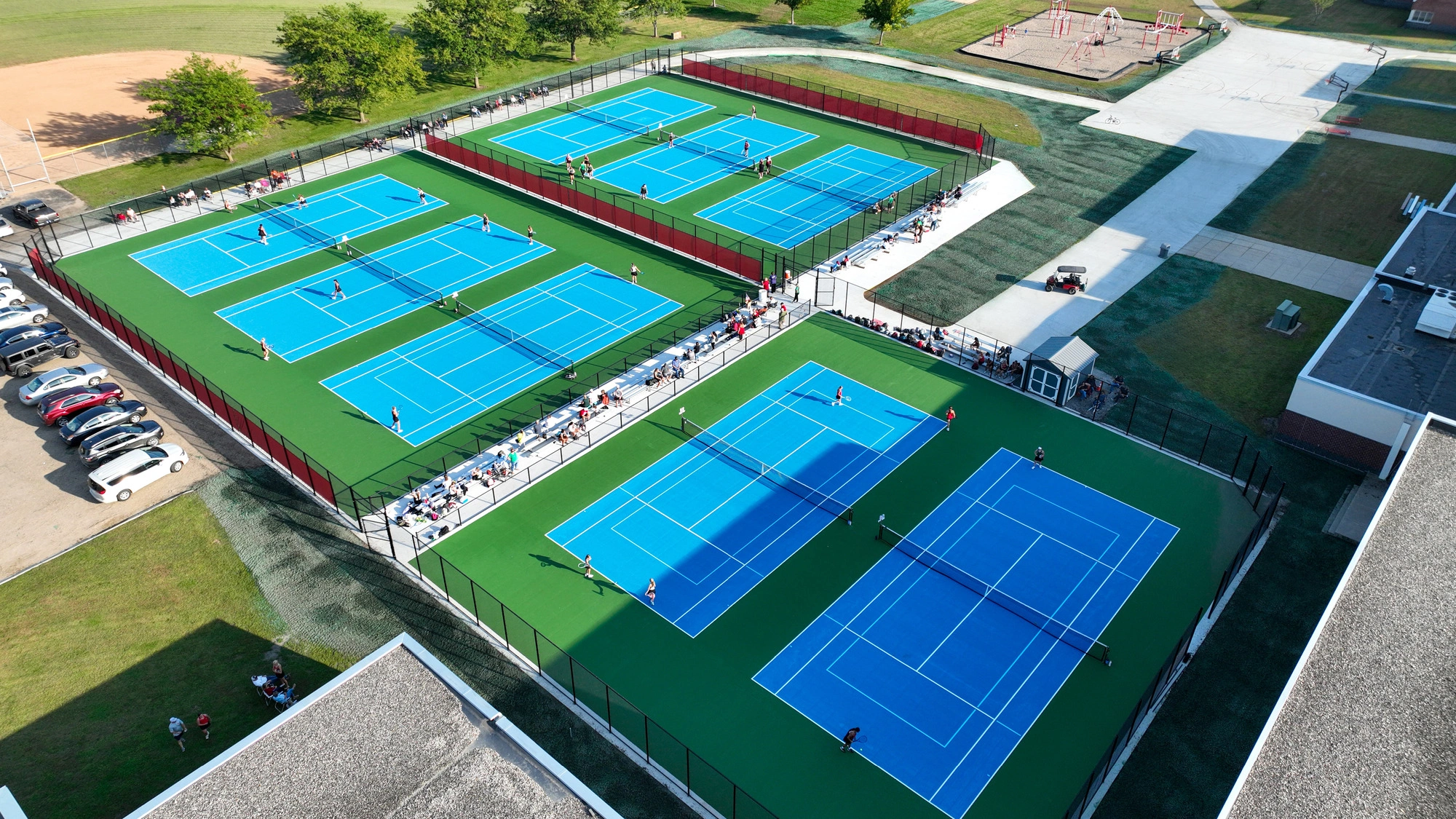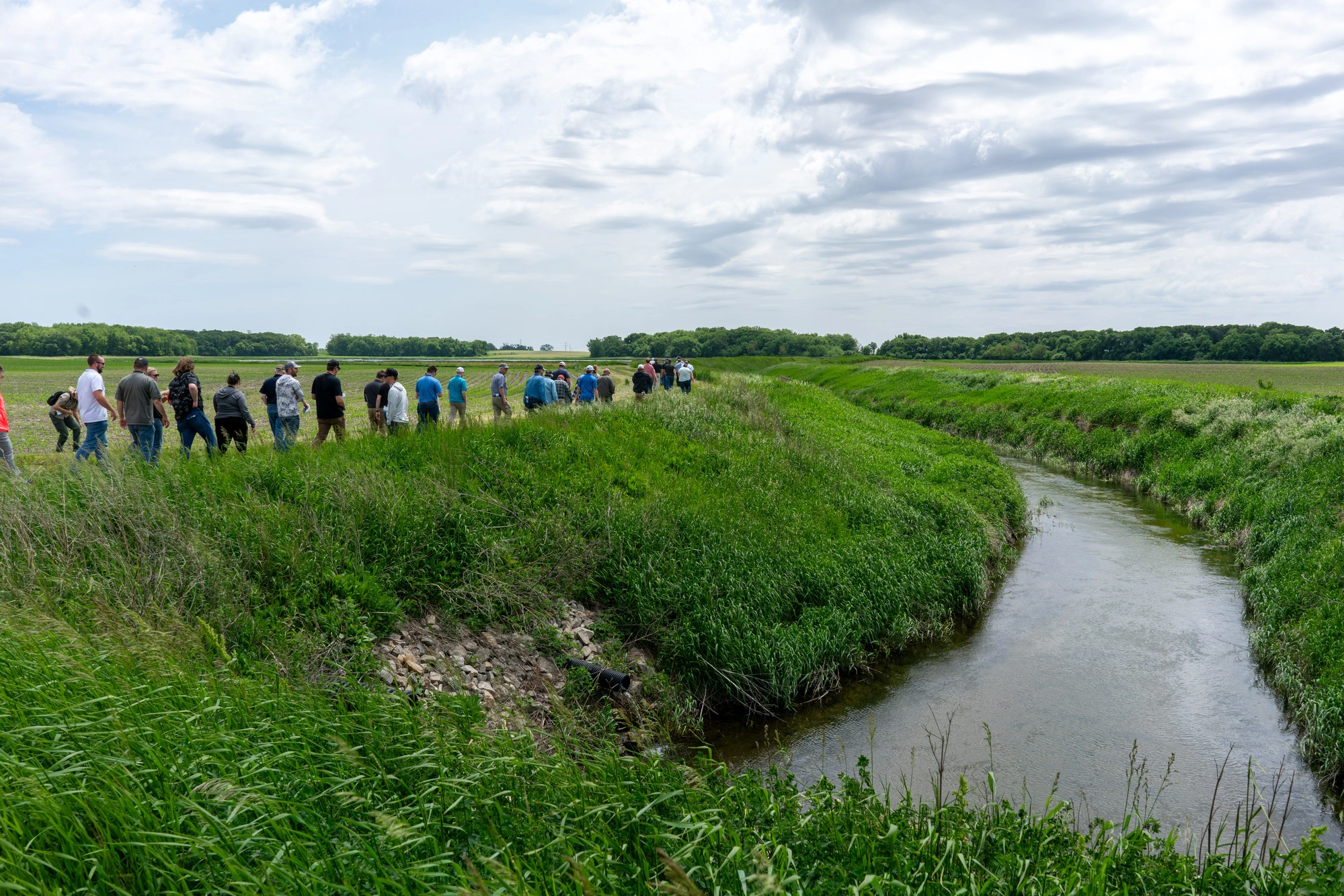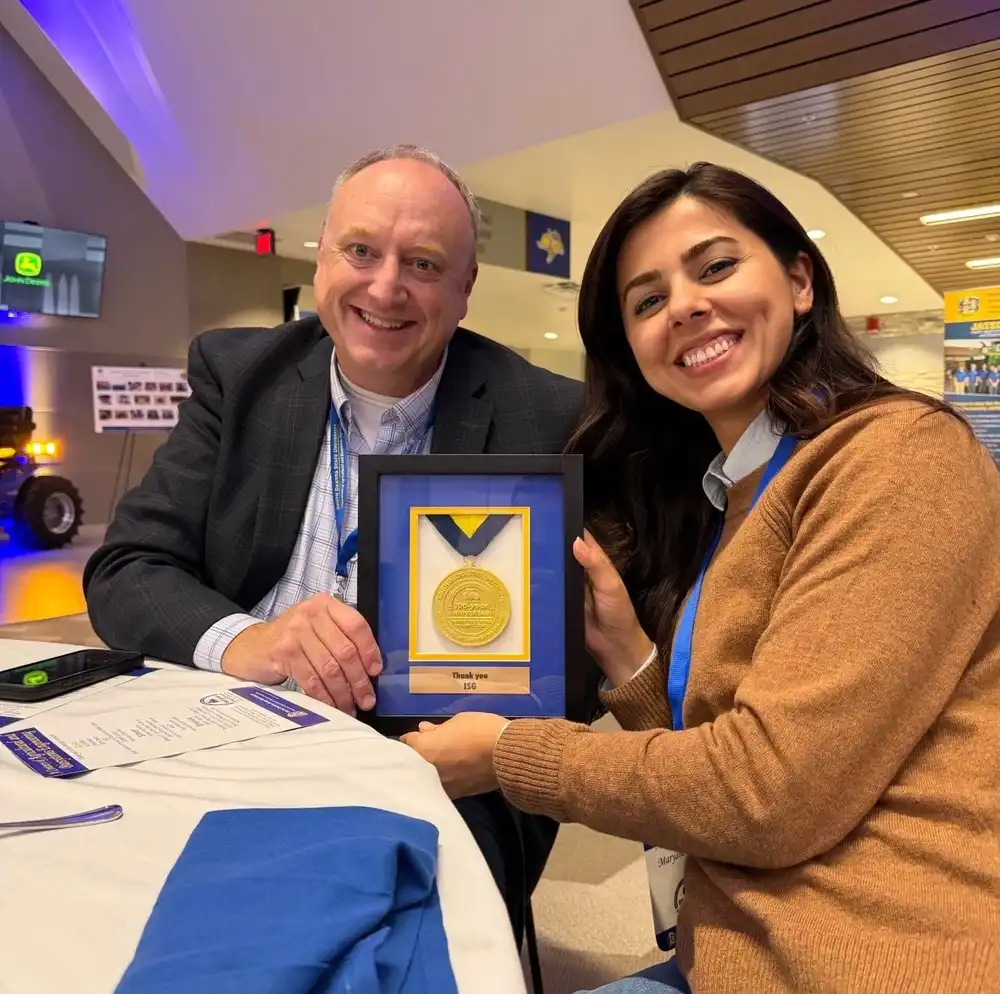Water Quality is Weaved into Every Project We Do
Celebrating Water Quality Month at ISG
This month and every month, ISG’s water specialists work hard to promote, build, and facilitate water system infrastructure that adheres to the latest local, state, and federal guidelines and keeps the water we consume, work with, and play in clean and safe.
Working on public and private projects across rural and urban landscapes, ISG’s water specialists are constantly identifying and implementing innovative water system practices that positively impact water quantity and water quality. These Best Management Practices (BMPs) range widely and can be seen implemented in the water resources management considerations of nearly every ISG project.
The projects below highlight how ISG’s water-focused engineers and scientists protect, conserve, and restore water quality on everything from lake water assessments and urban planning to new school site designs.
Water System Improvements in County Ditch (CD) 57 Reduce Flood Risk
Mapleton, MN
When failing water system infrastructure in CD 57 resulted in increased flood risk near the City of Mapleton, Minnesota, local officials knew action was needed. To improve water storage in the floodplain, ISG worked with the City to implement a unique solution: constructing a stormwater pond and two-stage ditch on the stormwater drainage system.
Implemented during the wettest decade on record, both BMPs were designed specifically to store stormwater, which in turn would prevent flooding and filter problematic stormwater runoff contaminants and sediment. The two-stage ditch accomplished this using native plants to soak up and filter stormwater. The pond provided storage for stormwater and sediment, preventing both from flowing downstream into nearby cities and water resources.
Lake Washington Water Quality Assessment Moves BMPs Forward
Central MN
Facing water quality challenges like algae blooms on Lake Washington, located in south central Minnesota, the Lake Washington Improvement Association (LWIA) wanted to understand why poor water quality was occurring and what could be done to address it. ISG worked with the LWIA to evaluate the existing conditions of the lake and identify the causes and sources of degradation. The resulting report identified known water quality issues within the lake and provided a science-based plan to identify goals and cost-effective short – and long-term implementation strategies to reduce algae blooms and improve overall water quality. A focus of the resulting assessment was to prioritize, target, and implement BMPs to achieve the highest water quality benefit for the least cost.
Recently, the Lake Washington Water Quality Assessment project received a new state water storage grant in the amount of $408,187. The funds are currently helping LWIA and the Le Sueur County Soil and Water Conservation District to secure easements and implement a proposed 150-acre storage and wetland enhancement area, which will allow sediment to settle prior to discharging flow into Lake Washington. This strategy, along with other proposed BMPs prescribed in the study, will work to reduce phosphorus and nitrogen from reaching Lake Washington and causing harmful algae blooms. This project has involved working with landowners to acquire easements to implement practices, gain additional funding, and spread awareness of the benefits of BMPs to improving water quality in Lake Washington.
Market District Improvements Answer Call for Sustainable Design
Des Moines, IA
The Market District Green Infrastructure Plan (Plan) was prepared in 2018 to provide forward-looking sustainability solutions in support of the revitalization of the Market District in downtown Des Moines, Iowa. Supporting a mix of uses, from hospitality and office to residential and retail, the District’s prime objectives were to become a showcase for responsible stormwater management and green infrastructure and to create a vibrant public realm for visitors and residents alike through a variety of approaches to streetscape design that accommodate multi-modal transportation (pedestrians, cars, and bikers). In 2020, ISG was enlisted to provide project management, design, and construction services to lead the Plan’s implementation.
ISG’s water resources team designed over 80 bioretention cells within the right-of-way, improving water quality for private and public spaces. These basins were designed to direct runoff from the street to flow into the basins, where plantings create a welcoming environment as well as absorb water and filter pollutants, reducing peak flows and runoff in the area. As a result, plants are flourishing in the area, and are expected to continue to grow better and last longer.
Prairie Winds Middle School Design Includes a Stormwater Treatment Train
Mankato, MN
Responding to a projected increase in student enrollment, the Mankato Area Public School District (the District) partnered with ISG to design a new middle school for approximately 1,100 students in sixth through eighth grade. Sustainability and efficient water management were priorities for the District and ISG in the design process.
To efficiently and sustainably capture stormwater runoff from the pavement of the entrance road to the school, a vegetative treatment swale was designed in the center of Prairie Winds Drive. A stormwater retention basin with native plantings was installed around the school and a large regional stormwater storage pond was constructed on the south side of the school to reduce peak stormwater flows and provide stormwater treatment for the entire development area; allowing homes to later be constructed near the school. Together, the swales, basin, and storage pond act as a treatment train where stormwater is captured and filtered first within the treatment swales, then through the plantings used in the basins, and finally with the storage pond.
Learn More!
Radio Interview
Tune in to the below podcast to hear ISG Vice President and Water Business Unit Leader Chuck Brandel, PE discuss water quality issues and the diverse range of projects and markets impacted by smart water management.
https://share.transistor.fm/s/cb32ece8
Video
Experience an up-close view of the CD 57, Lake Washington, and Prairie Winds Middle School project sites and see a few of the BMPs that have been implemented to improve water quality and reduce flood risks.
Related Articles

.webp)
ISG Recognized as a 2025–26 Emerging Professional Friendly Firm for the Fourth Consecutive Cycle
ISG has been honored as a 2025–26 Emerging Professional Friendly Firm by AIA chapters in North Dakota, South Dakota, Wisconsin, and Minnesota in recognition of its commitment to fair compensation, licensure support, mentorship, and growth for early-career architects.













